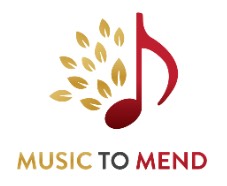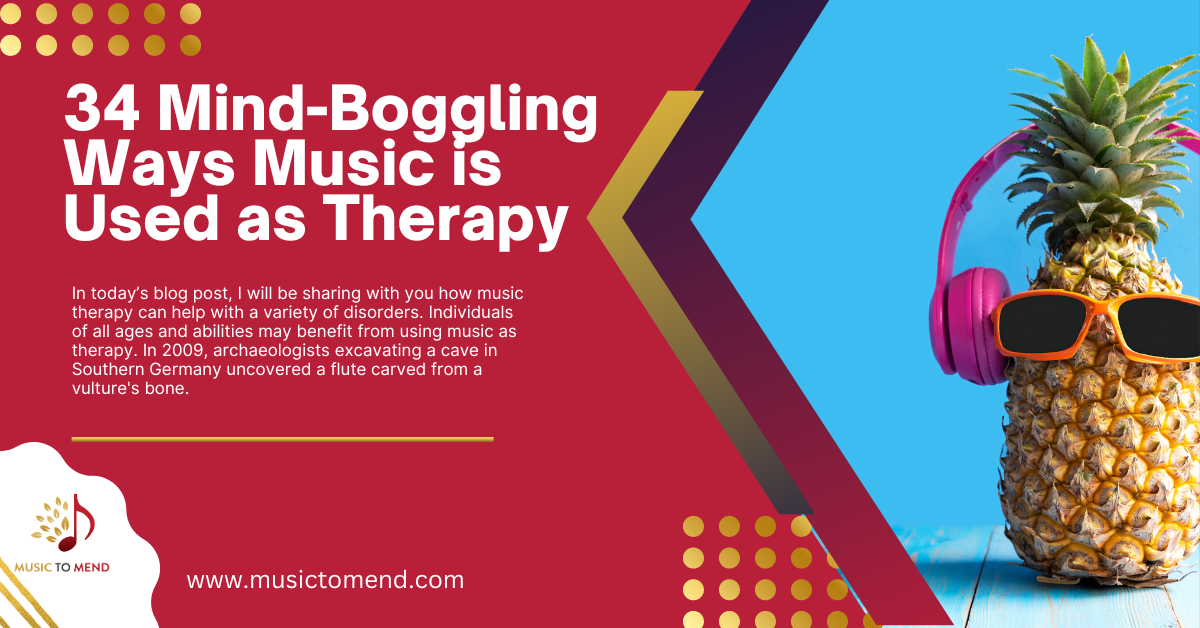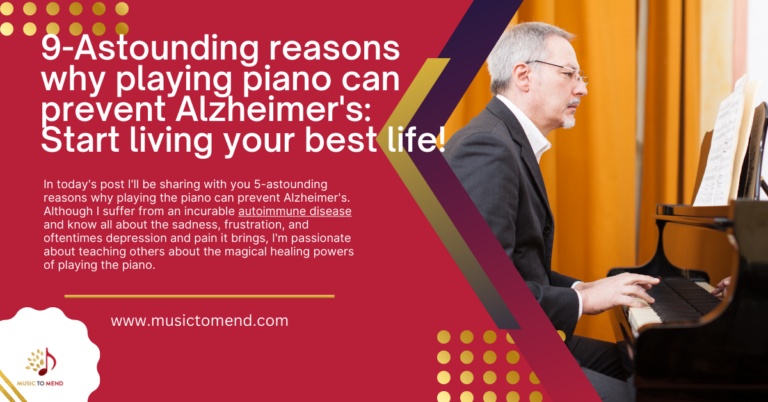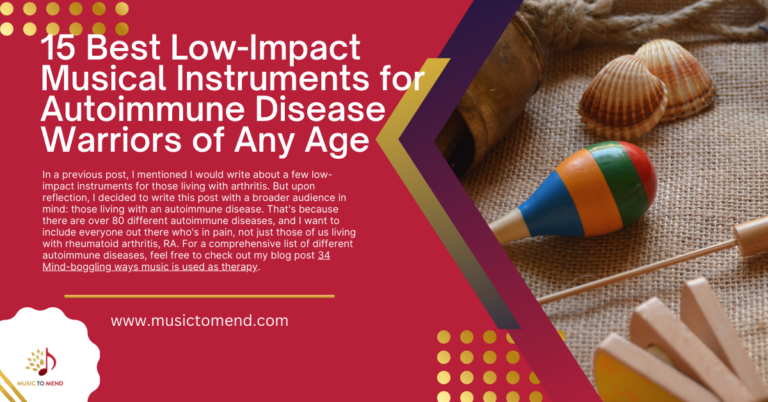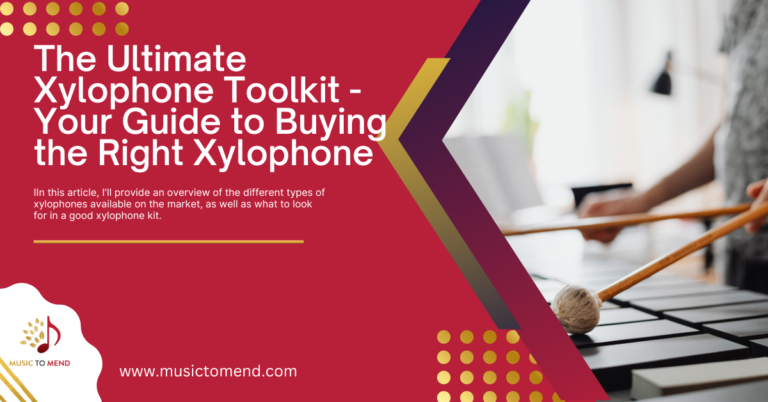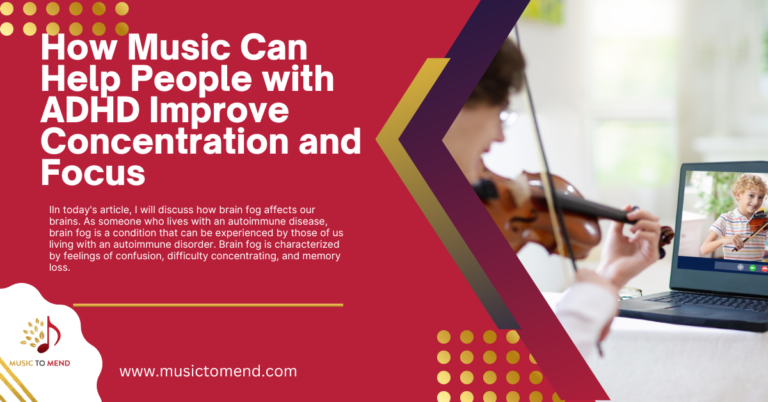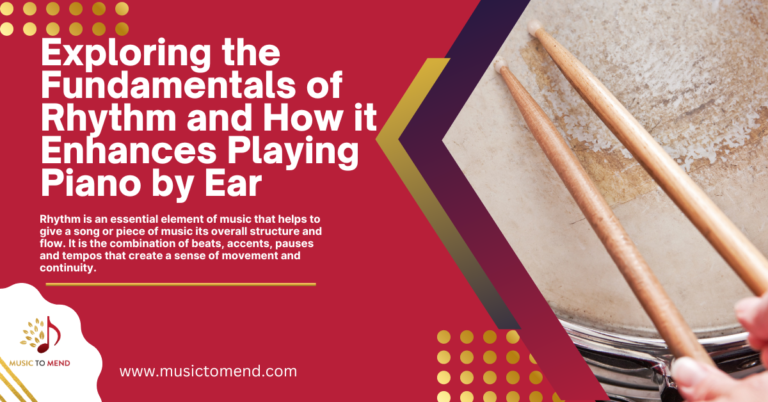34 Mind-Boggling Ways Music Is Used As Therapy
Did you know six in 10 adults in the United States have a chronic disease? And, four in 10 adults in the US have two or more chronic diseases. About five years ago, I was diagnosed with rheumatoid arthritis and fibromyalgia. So I guess you can say I have joined that group of statistics. And believe me, it’s not a statistic I wanted to be included in.
I’ve had my share of doctor’s visits and hospitals, that’s for sure, and thankfully I was able to get all of my medical tests covered by health insurance; however, unfortunately, many people suffering from either arthritis or other autoimmune diseases aren’t so lucky. Luckily, there are other ways to get blood tests to determine the severity of arthritis and assess inflammation. There were even days when I couldn’t walk, due to the pain in both of my feet! Disclosure: Some of the links in this article may be affiliate links, which can provide compensation to me at no cost to you if you decide to purchase a paid plan.
In today’s blog post, I will be sharing with you how music therapy can help with a variety of disorders. Individuals of all ages and abilities may benefit from using music as therapy. In 2009, archaeologists excavating a cave in Southern Germany uncovered a flute carved from a vulture’s bone. The delicate artifact is the oldest known musical instrument on earth – – indicating that people have been making music for over 40,000 years. (healthline.com/health/benefitsofmusic) So make yourself comfortable, grab a cup of tea, and buckle your seatbelts! Let’s dive right in.
Awe-inspiring benefits of music as therapy
- Lowers blood pressure
- Helps improves memory
- Greatly enhances communication and social skills
- Encourages self-reflection
- Reduces muscle tension
- Develops healthy coping skills to manage your thoughts and emotions
- Increases motivation
- Manages pain
- Increases joy
- Decreases depression
- Lessons feelings of isolation
- Improves mood
- Reduces anxiety
- Manages stress
- Improves motor development or processing
- Improves sleep and relaxation
- Improves speech
- Reduces asthma episodes
- ImproIves walking
- Improves motor function
- Improves sense of control
- It helps with coping skills
- Lessons the effects of dementia
- Helps autism patients improve communication
- Improves respiration
- It provides an outlet to express feelings
- Improves overall physical rehabilitation
- Increases movement and exercise
- Improves memory and focus
- Calms agitation in dementia patients
- Increases self-esteem
- Provides emotional release
- It helps seniors process their thoughts and maintain memories
- Slows the deterioration of language and speech skills
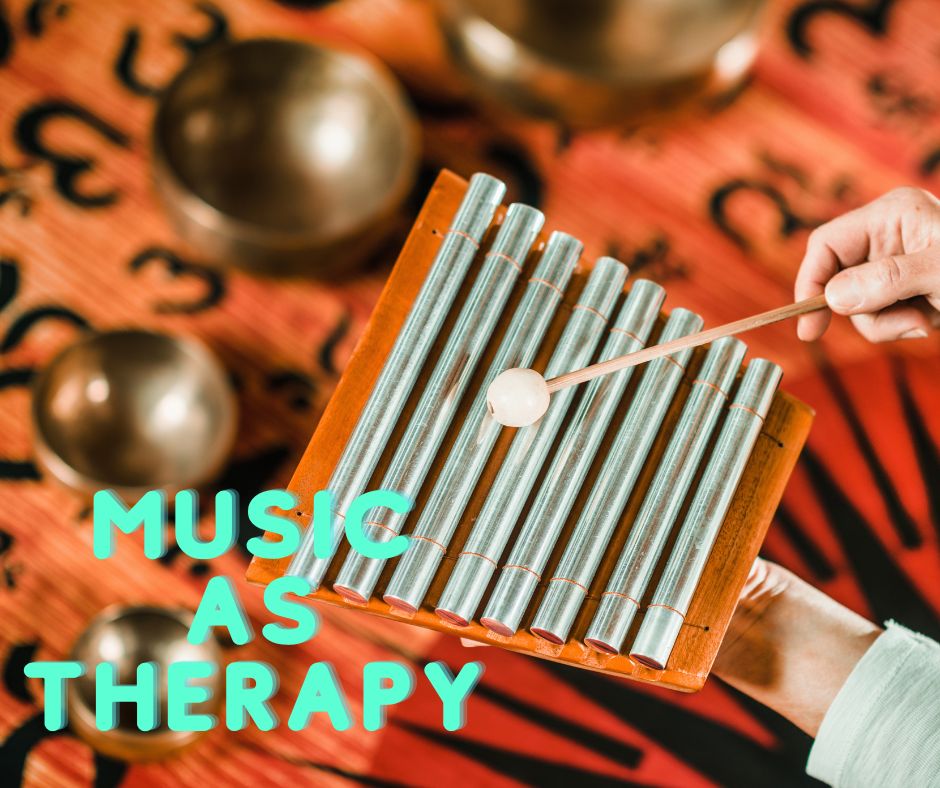
Music as therapy can be used in a multitude of illnesses. According to Wikipedia (wikipedia.org) chronic conditions are described as a human health condition or disease that is persistent or otherwise long-lasting and its effects or a disease that comes with time. In addition, music also helps people who have Alzheimer’s disease and those afflicted with PTSD (Mayo Clinic.org). Here is a list of illnesses music therapy can help alleviate pain for those who are suffering:
Music can be therapeutic in the following illnesses, diseases, or disabilities:
- Alzheimer’s disease
- atrial fibrillation
- attention deficit hyperactivity disorder
- autoimmune diseases such as ulcerative colitis, lupus, Crohn’s disease, coeliac disease, Hashimoto’s thyroiditis, and relapsing polychondritis
- autism or ASP burgers syndrome
- blindness
- cerebral palsy
- chronic hepatitis
- chronic kidney disease
- osteoarthritis
- rheumatoid arthritis
- post-vasectomy pain syndrome
- complex regional pain syndrome
- atopic dermatitis and psoriasis
- endometriosis
- epilepsy
- fibromyalgia
- Huntington’s disease
- hypertension
- Lyme disease
- mental illness
- migraines
- multiple sclerosis
- narcolepsy
- obesity
- osteoporosis
- Parkinson’s disease
- sickle cell
- substance abuse disorders
- sleep apnea
- PTSD
- thyroid disease
- tuberculosis
- cancer
- and many more
According to the World Health Organization (WHO) who.in/health-tops/disability, over 1 billion people experience some form of disability, temporary or permanent. For many of us struggling with a disability and chronic pain, oftentimes it’s hard to get out, even if we just want to buy stamps and mail a letter; however, with Stamps.com you can print postage 24 hours a day, 7 days a week. Something as small as ordering stamps online can make a world of difference!
Musical instruments used in music as therapy
According to Wikipedia (en.wikipedia.org/wiki/listofmusicalinstruments), musical instruments can be categorized into 5 parts: percussion, membranophones, wind, stringed and electronic instruments.
The list below describes various instruments (but not all) which can be used in using music as therapy.
- Piano
- guitar
- drum
- congas
- maracas
- tambourines
- glockenspiel
- xylophone
- cabasa
- bells
- castanets
- Timpani
- Harp
- Violin
- Harmonica
- Pipe organ
- Marimba
My recommendation if you’re just starting out is to use a low-impact instrument. If you suffer from hand or joint pain, or any other type of pain, starting your musical journey should be easy on you. For a suggestion on which instrument you would most benefit from, I’ve created a list of 10 Low-impact instruments.
Benefits of singing as a form of music therapy
Here is a list of how singing can be used as a form of music therapy:
- reduces stress
- helps with self-expression
- social interaction
- cognitive behavior therapy
- cognitive skills
- bolsters competence
- encourage self-awareness
- Stimulates the immune system
- Increases pain threshold
- May improve snoring
- Improves lung function
- Develops a sense of belonging
- Enhances memory in dementia patients
- Helps with grief
- Improves mental health and mood
- Helps with stuttering
- Reduces fatigue
(Healthline.com/health/benefits-of-singing)
Research has shown that singing can be good for you on many levels. It may help lower stress, boost immunity and lung function, enhance memory, improve mental health, and help you cope with physical and emotional pain. And when I felt I needed a little something sweet and sugar-free, I found eating a delicious piece of chocolate that could always cheer me up!

One of the best things about singing is that you don’t have to be good at it to reap the rewards. You can sing on your own in the shower or to your favorite tunes on the radio. Or, you can join a choir or singing group for even more benefits, such as connectedness and a sense of belonging.
- Take a meandering drive — just you, the road, and the radio.
- Jump in the shower, where the acoustics are superior, and sing all your favorite tunes.
- Sing with your kids. You’ll make memories you can all cherish.
- Try a music festival. Some offer group sing-alongs as part of the event schedule.
- Look for a local chorus, choir, or song circle, and find out when you can join.
- If you want to sing more confidently before you join a group, book a lesson or two with a singing instructor.
- For free singing lessons, check out the many coaching sessions on YouTube.
- Evolutionary scientists say human beings may have developed a dependence on music as a communication tool because our ancestors descended from arboreal species — tree-dwellers who called to one another across the canopy.
Music remains a powerful way of uniting people:
- national anthems connect crowds at sporting events
- protest songs stir a sense of shared purpose during marches
- hymns build group identity in houses of worship
- love songs help prospective partners bond during courtship
- lullabies enable parents and infants to develop secure attachments
Researchers now know that just the promise of listening to music can make you want to learn more. In one 2019 study, people were more motivated to learn when they expected to listen to a song as their reward.
Music also has a positive effect on your ability to memorize.
In one study trusted Source, researchers gave people tasks that required them to read and then recall short lists of words. Those who were listening to classical music outperformed those who worked in silence or with white noise.
The same study tracked how fast people could perform simple processing tasks — matching numbers to geometrical shapes — and a similar benefit showed up. Mozart helped people complete the task faster and more accurately.
Mayo Clinic points out that while music doesn’t reverse the memory loss experienced by people with Alzheimer’s disease and other forms of dementia, music has been found to slow cognitive decline trusted Source, helping people with mild or moderate dementia remember episodes from their lives.
Music memory is one of the brain functions most resistant to dementia. That’s why some caregivers have had success using music to calm dementia patients and build trusting connections with them.
Music literally changes the brain. Neurological researchers have found that listening to music triggers the release of several neurochemicals that play a role in brain function and mental health:
- dopamine, a chemical associated with pleasure and “reward” centers
- stress hormones like cortisol
- serotonin and other hormones related to immunity
- oxytocin, a chemical that fosters the ability to connect to others
Although more research needs to be done to understand precisely how music can be used therapeutically to treat mental illness, some studiesTrusted Source suggest that music therapy can improve the quality of life and social connectedness for people with schizophrenia.
There’s lots of evidence that listening to music can help calm you in situations where you might feel anxious.
StudiesTrusted Source have shown that people in rehab after a stroke are more relaxed once they’ve listened to music for an hour.
Similar studiesTrusted Source indicate that music blended with nature sounds help people feel less anxious. Even people facing critical illnessTrusted Source feel less anxiety after music therapy.
There’s conflicting evidence about whether listening to music has an effect on your body’s physiological stress response, however. One studyTrusted Source indicated that the body releases less cortisol, a stress hormone, when people listen to music. This same study referenced previous research stating that music had little measurable effect on cortisol levels.
One recent studyTrusted Source that measured several indicators of stress (not just cortisol) concluded that while listening to music before a stressful event doesn’t reduce anxiety, listening to relaxing music after a stressful event can help your nervous system recover faster.
A 2017 research reviewTrusted Source concluded that listening to music, particularly classical combined with jazz, had a positive effect on depression symptoms, especially when there were several listening sessions conducted by board-certified music therapists.
Not into jazz or the classics? You may want to try a group percussion session instead. The same research review found that drum circles also had above-average benefits for people dealing with depression.
Music can make you want to move — and the benefits of dancing are well-documented. Scientists also know that listening to music can alterTrusted Source your breath rate, your heart rate, and your blood pressure, depending on the music’s intensity and tempo.
It decreases fatigue
Anyone who has ever rolled down car windows and turned up the radio knows that music can be energizing. There’s solid science behind that lived experience.
In 2015, researchersTrusted Source at Shanghai University found that relaxing music helped reduce fatigue and maintain muscle endurance when people were engaged in a repetitive task.
Music therapy sessions also lessened fatigue in people receiving cancer treatments and raised the fatigue threshold for people engaged in demanding neuromuscular training, which leads us to the next big benefit.
It boosts exercise performance
Exercise enthusiasts have long known that music enhances their physical performance.
A 2020 research review confirms that working out with music improves your mood, helps your body exercise more efficiently, and cuts down on your awareness of exertion. Working out with music also leads to longer workoutsTrusted Source.
In clinical settings, athletes who listened to high-intensity, fast music during warmups were motivatedTrusted Source to perform better competitively.
You don’t have to be a world-class competitor to benefit: ResearchTrusted Source shows that syncing your workout to music can allow you to reach peak performance using less oxygen than if you did the same workout without the beat. Music acts as a metronome in your body, researchers said.
It can help manage pain
Specially trained music therapists use music to help alleviate pain in inpatient and outpatient settings. A 2016 meta-analysisTrusted Source of over 90 studies reported that music helps people manage both acute and chronic pain better than medication alone.
How playing piano is therapeutic
Studies show that time spent at the keyboard improves mental health: people who make music experience less anxiety, loneliness, and depression. Playing piano has also been shown to be a great source of stress relief, and provides ample opportunities to bolster self-esteem.
According to https://www.ncbi.nlm.nih.gov/pmc/articles/PMC6368928/, Hays and Minichiello found that learning to play the piano might enhance mood and certain aspects of the quality of living indicators in older adults. Those over 65 years who played music reported improved self-esteem, greater independence, and fewer feelings of isolation. Playing music also created a temporary escape from the stress of daily life. Playing the piano can decrease psychological distress, depression, and fatigue. The article goes on to say that a single episode of playing the piano was beneficial for a 91-year-old female patient who previously played when she was young and who was currently experiencing psychotic and depressive symptoms.

How playing piano can help with arthritis
As someone who suffers from rheumatoid arthritis, I’ve not let this stop me from playing the piano. And it never, ever will! The piano is such a beautiful instrument that brings me so much joy!
I explain in further detail in the following YouTube video.
Here is a list of how playing the piano with arthritis can actually help:
- Strengthens the joints and muscles in your hands
Ulnar Deviation / Drift Hand Splint for Arthritis & MCP Knuckle Joint Support – Right M/L - Keeps your hand muscles developed
- Avoids the weakening of small bones
- Alleviates some of the pain associated with arthritis. I personally use LifePro Hand Massager
- Releases endorphins
- Improves dexterity
How to strengthen fingers for playing piano
- Use a piano with Hammer or weighted action
- Stretch the fingers before you play the piano
- Practice piano for shorter periods
- Be consistent with piano practice
- Choose easy songs
- Practice away from the piano
- Joshuarosspiano.com/how-to-strengthen-fingers-for-piano
Xylophone in music as therapy
So, what is a xylophone? Whilst you probably know it in its first definition, it is worth noting that there are in fact, two different definitions of this instrument – one quite a lot more specific than the other.
Generally, then, we use the term xylophone to refer to any tuned percussion instrument arranged in wooden bars. This consequently includes things like the marimba, the balafon, and other such instruments as the vibraphone.
However, if you were to ask a specialist – a percussionist in an orchestra, say – they’d tell you something quite different. Xylophones, to them, in their most specific sense, are instruments that are quite distinct from marimba, say – although both use mallets or beaters.
Where a marimba would have vertical pipes or resonators beneath each of the horizontal bars, a xylophone does not. And as a result, there is a significant tonal difference – as the xylophone’s sound is much higher pitched and drier than a marimba.
However, all of these instruments mentioned here – including the glockenspiel, too – come from the same family of idiophones, instruments that produce a sound through the vibration of the whole struck element. It is important to note, though, that xylophones are made of wood. The metal variety is known as the metallophone.
Consequently, while you will see that there are many similarities between the family of tuned percussion, orchestral percussionists need to make very distinctions – as the precise quality of the sound makes an important difference. In future blog posts, I will be commenting on and suggesting other beautiful-sounding instruments you can use in your personalized musical journey to health and happiness.
Until next time, happy music-playing!
Bea
